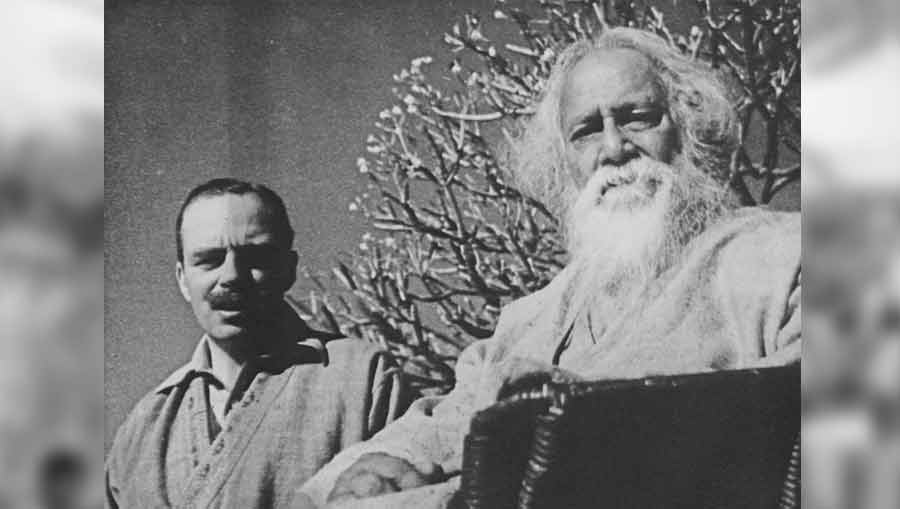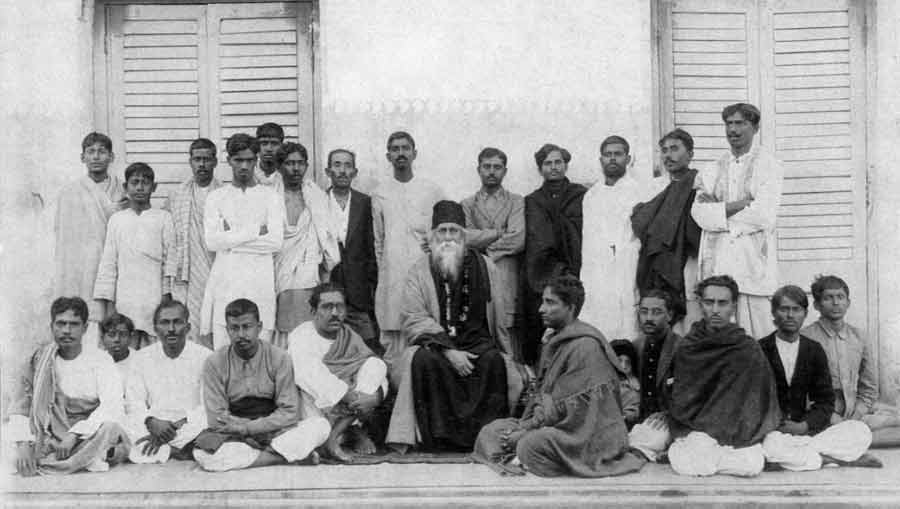When discussing Rabindranath Tagore and his multifaceted achievements, popular discourse often overlooks the Bengali polymath’s remarkable contribution to the field of rural reconstruction. During a visit to his family’s agricultural estates in Selidaha and the neighbouring areas, Tagore was deeply impacted by the plight of the rural masses.
It was from this compassion that he conceived what he went on to call ‘The Sriniketan experiment’, named after the eponymous centre for rural reconstruction that he set up as a wing of his Viswa Bharati University. In doing so, he hoped to inspire the villagers and motivate them towards attaining self-reliance and economic independence by improving their access to education, healthcare, employment opportunities and other such basic necessities.
Uma Das Gupta’s A History of Sriniketan: Rabindranath Tagore’s Pioneering Work in Rural Reconstruction delves into the details of Tagore’s work at Sriniketan, which he later deemed as being his ‘life’s work’.

(R) Uma Das Gupta
The following extract has been taken from the second chapter of the book titled, ‘The Sriniketan Work Begins’.
---------------------------------------------------------------------------------------------------------------------------------------------
In 1921, Rabindranath travelled widely to inform the larger humanity about his Visva-Bharati International University at Santiniketan, a ‘place’ for the world to meet as in a single ‘nest’. When he was in the USA, he arranged to meet a young Englishman who was then a student of agriculture at Cornell University. This was L.K. Elmhirst (1893–1974, agricultural economist, led the Sriniketan work during 1922–24, and later gave it his lifelong support). Rabindranath had been told about Elmhirst by another Englishman, Sam Higginbottom (1874–1958), who founded the Nainital Agricultural Institute, where Elmhirst had worked for some months as a wartime volunteer in 1917–18. Rabindranath appealed to Elmhirst to come over and start the Surul Farm.

Rabindranath Tagore and L.K. Elmhirst
About their meeting Elmhirst wrote:
I remember well the morning in the spring of 1921 when a telegram reached me at Ithaca, from Tagore, which read ‘Come and see me in New York. I made a hurried journey to New York, and shall never forget the friendly welcome I received. ‘I have’, Tagore said to me, ‘an institution of learning and the arts at Santiniketan which is mainly academic. It is surrounded by villages, some Hindu, some Muslim, some Santal, but all are decaying; all had an ancient culture, but today they appear sick. Will you come and help me to find out why? Would you be prepared to go and live in a village? Would you like to consider it? Then how about sailing back with me tomorrow?’
‘But’, said I, ‘if I am really to be of any use to you, I must finish my course at Cornell’.

L.K. Elmhirst at Sriniketan, 1922-23
Elmhirst came to work for Sriniketan after completing his course of studies at Cornell. He came to Santiniketan at the end of 1921 and started the rural work in 1922, by moving to Surul with a team of two teachers and 10 senior students from the Santiniketan school. In the team were Rathi Babu, Santosh Majumdar, and Kalimohan Ghose, whom Elmhirst referred to as his ‘three closest collaborators’. Another resource person who joined them soon after was Miss Gretchen Green from the USA, a paramedical nurse, who was asked to set up the Village Health Centre and Clinic at Surul.
It was not easy at first for the Santiniketan-Sriniketan team to start their work as there was an ongoing political movement at the time. Gandhi’s Non-cooperation Movement had touched many hearts, even in Santiniketan. The political ferment also affected the team’s relationship with the villagers to some extent. Elmhirst wrote in his diary how Rabindranath used to discuss their local problems and experiences regularly and consulted, in particular, with Kalimohan Ghose, as he was the Sriniketan contact person with the local villagers. Moreover, the villagers trusted Kalimohan Ghose.

Mahatma Gandhi at Sriniketan, 1941, in front of the Halakarshana mural by Nandalal Bose in Cheap Kuthi
Initially, the team took up reconstruction work in the three designated villages in Surul’s neighbourhood. The records in Elmhirst’s diary refer to the desperate struggle they had in making the initial contacts, at first, with the Muslim villages, and later, also with the Hindu villages. Again, as Elmhirst wrote in his diaries, Rabindranath learned about it all from Kalimohan and gave his encouragement to keep the work going and reiterated his support for it.
After getting the work started, Elmhirst could stay for only two years, from 1922 to 1924. He had to return to England to start his own educational institution, Dartington Hall in Devonshire, though he remained connected with the Sriniketan work throughout his life. His correspondence with Rathi Babu bears out how closely he followed all matters of Sriniketan, even criticized some of it in his assessment. Rathi Babu sought Elmhirst’s advice earnestly, and a number of the leading village workers also stayed in touch with him. Elmhirst himself returned to Sriniketan on short visits every couple of years. The lady he married, Dorothy Whitney Straight (1887–1958), endowed an annual grant of Rs 32,000 for Sriniketan, which was of foundational help to the work over the years. That is how Sriniketan’s ‘permanence’ was ensured. Dorothy Whitney Straight was the daughter of the American financier, William Whitney, and the widow of the distinguished diplomat Willard Straight. Rabindranath dedicated his book of essays, Pioneer in Education, to Dorothy with the following words, ‘To Dorothy Whitney Straight who made Sriniketan possible’.

Dorothy Elmhirst
When the Sriniketan work was being conceived, Rabindranath insisted on an all-rounded approach that would take account of the villager’s life in all aspects. He also asserted his confidence in the cooperation of the young people in bringing about the reforms and in gradually taking along their elders with them to that end. That is why he was attracted to the Scout Movement founded by Lieutenant General Robert Baden-Powell (1857–1941, founder of the worldwide Scout Movement), and decided to tie up the Sriniketan experiment with the Scout Movement. Rathi Babu arranged for two boys from the Santiniketan school to join a training course for Scout leaders in the Central Provinces.
Among the other aspects of the Sriniketan experiment, Rabindranath encouraged the collaboration of scientists, economists, sociologists, and technicians with the work. He encouraged one and all to stand by the villagers in their struggle against poverty and oppression. He was also cautious that the team did not impose too much ‘statistics’ or technicalities on the villagers in bringing about the changes. He wrote to Elmhirst, ‘All the time when Sriniketan has been struggling to grow into a form, I was intently wishing that it should not only have a shape, but also light, so that it might transcend its immediate limits of time, space and special purpose.’

The Sriniketan community with Tagore, 1936; among others are Nandalal Bose, Santosh Bhanja, Sudhindra Chandra Ray and Tarak Dhar
All photographs and captions are extracts from: A History of Sriniketan: Rabindranath Tagore’s Pioneering Work in Rural Reconstruction by Uma Das Gupta has been published by Niyogi Books.
Read more about the book here: https://www.niyogibooksindia.com
